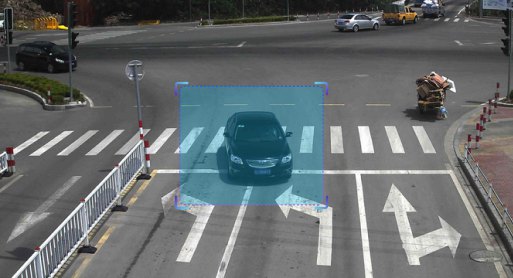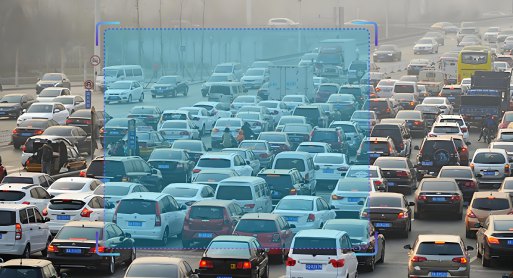
Motor Vehicle Illegal Parking Detection

Algorithm Introduction
Capable of detecting motor vehicles parked in no-parking zones along urban roads or curbside areas.
- ● Brightness requirements: Minimum bright pixel ratio (grayscale value >40) of 50% within the detection area
- ● Image requirements: Optimal detection performance at 1344×800 resolution
- ● Target size: For resolutions exceeding 1344×800, minimum target size of 40 pixels (width) × 66 pixels (height)
Application Value
-

Urban Roadways
The algorithm utilizes roadside video equipment to precisely detect illegally parked vehicles in no-parking zones. This effectively prevents traffic congestion caused by illegal parking, and ensures the efficient operation of urban traffic systems. -

Industrial Parks
Targeting trucks and work vehicles, the algorithm detects illegal parking, which prevents obstruction of logistics routes, and maintains order during the industrial park's production and transportation operations. -

Parks & Amusement Areas
The algorithm dynamically monitors vehicle parking status by incorporating holiday traffic patterns, accommodating visitors' temporary parking needs while promptly addressing long-term illegal parking. This ensures smooth traffic flow around the venue and enhances the visitor experience.
FAQ
-
Algorithm AccuracyAll algorithms published on the website claim accuracies above 90 %. However, real-world performance drops can occur for the following reasons:
(1) Poor imaging quality, such as
• Strong light, backlight, nighttime, rain, snow, or fog degrading image quality
• Low resolution, motion blur, lens contamination, compression artifacts, or sensor noise
• Targets being partially or fully occluded (common in object detection, tracking, and pose estimation)
(2) The website provides two broad classes of algorithms: general-purpose and long-tail (rare scenes, uncommon object categories, or insufficient training data). Long-tail algorithms typically exhibit weaker generalization.
(3) Accuracy is not guaranteed in boundary or extreme scenarios.
-
Deployment & InferenceWe offer multiple deployment formats—Models, Applets and SDKs.
Compatibility has been verified with more than ten domestic chip vendors, including Huawei Ascend, Iluvatar, and Denglin, ensuring full support for China-made CPUs, GPUs, and NPUs to meet high-grade IT innovation requirements.
For each hardware configuration, we select and deploy a high-accuracy model whose parameter count is optimally matched to the available compute power.
-
How to Customize an AlgorithmAll algorithms showcased on the website come with ready-to-use models and corresponding application examples. If you need further optimization or customization, choose one of the following paths:
(1) Standard Customization (highest accuracy, longer lead time)
Requirements discussion → collect valid data (≥1 000 images or ≥100 video clips from your scenario) → custom algorithm development & deployment → acceptance testing
(2) Rapid Implementation (Monolith:https://monolith.sensefoundry.cn/)
Monolith provides an intuitive, web-based interface that requires no deep AI expertise. In as little as 30 minutes you can upload data, leverage smart annotation, train, and deploy a high-performance vision model end-to-end—dramatically shortening the algorithm production cycle.





